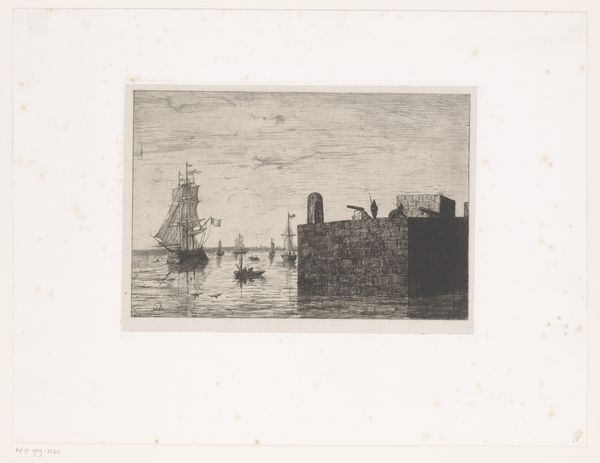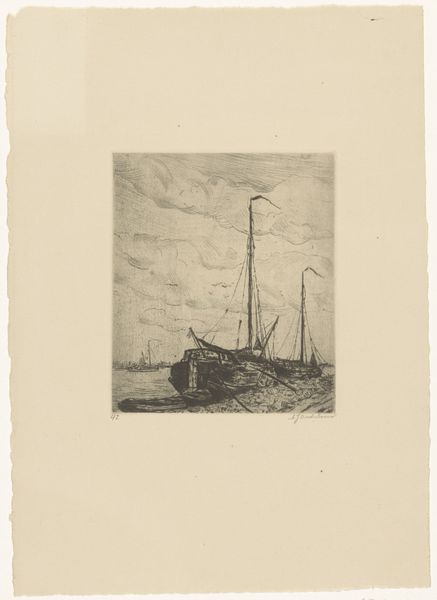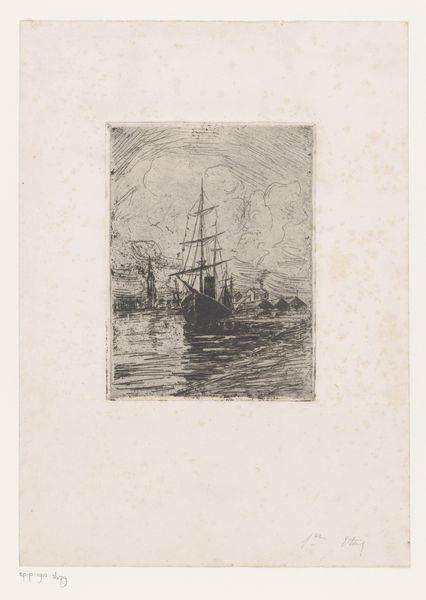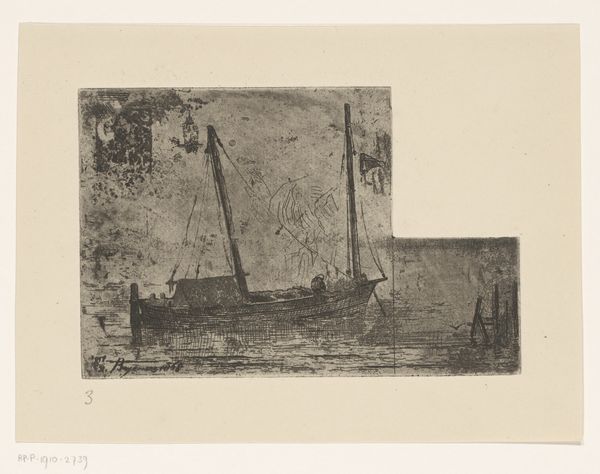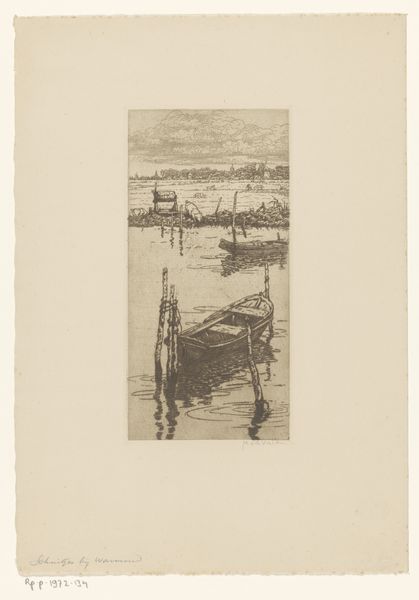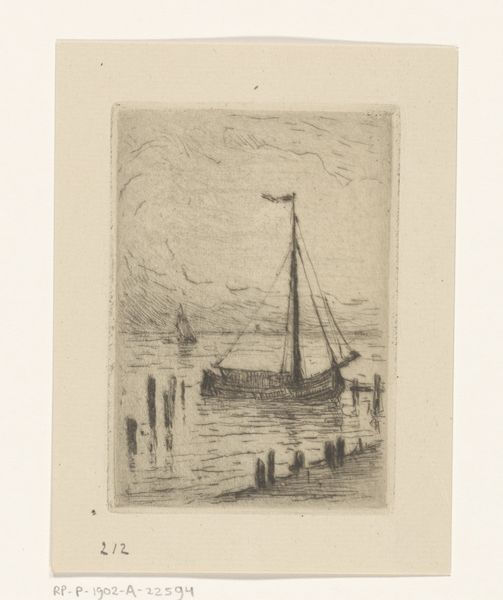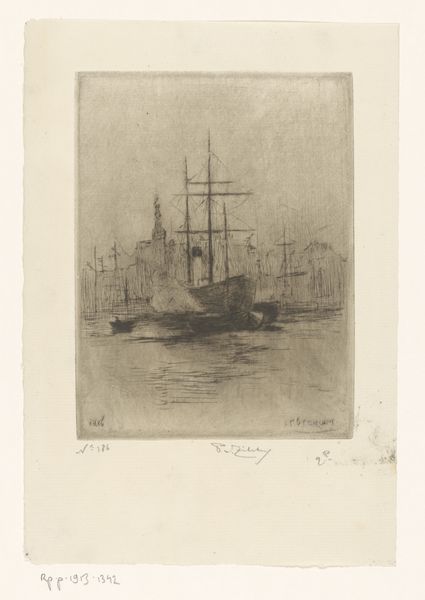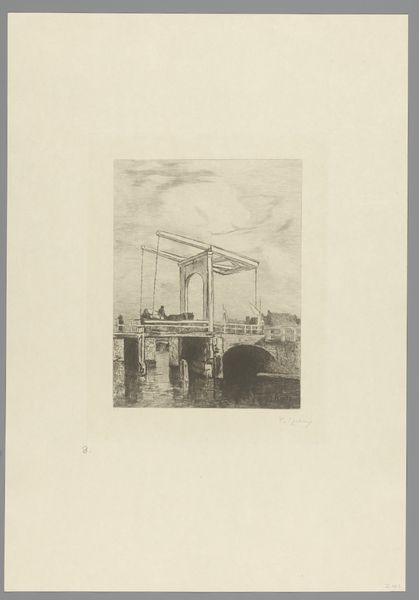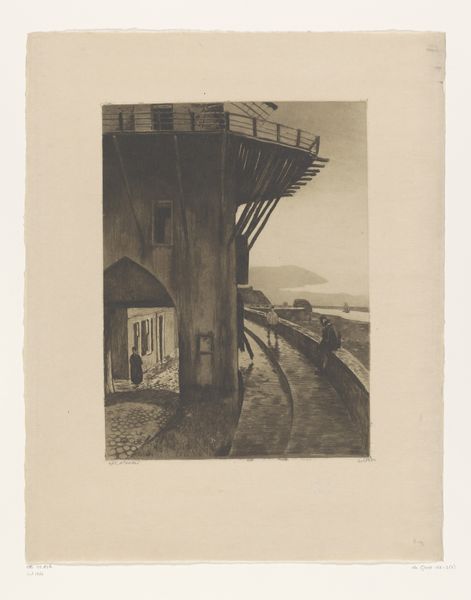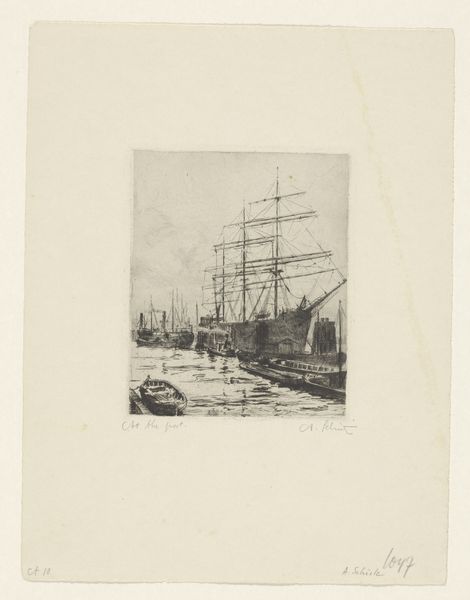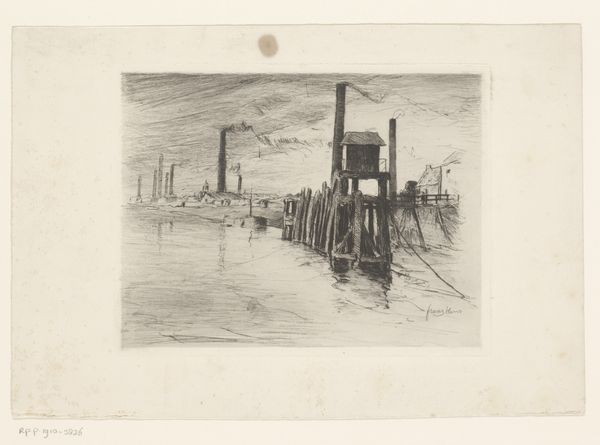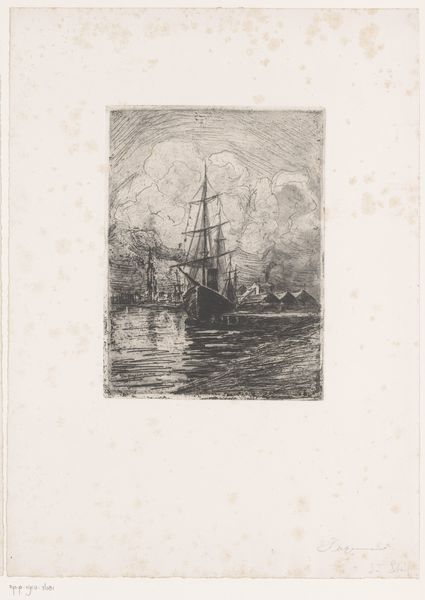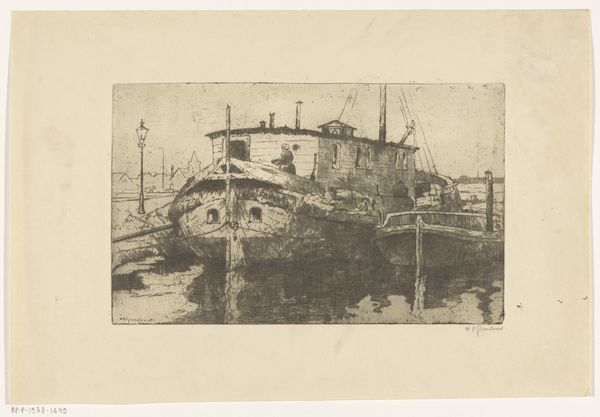
print, etching
# print
#
etching
#
landscape
#
cityscape
Dimensions: 9 1/4 x 6 1/4 in. (23.5 x 15.88 cm) (plate)15 x 11 3/4 in. (38.1 x 29.85 cm) (sheet)
Copyright: Public Domain
Editor: Here we have "Docks," an etching by Henri-Charles Guérard, created around the 19th century. The cityscape feels a little claustrophobic to me. All of the ships seem really densely packed together, almost looming over the tiny figure walking by. What do you see in it? Curator: For me, the fascination lies in the printmaking process itself. Look at the materiality. The etching—a traditionally reproducible medium—depicts a working port. This intertwining of industry and art production immediately draws me to think about the economic systems in play at the time. Do you notice how the artist used line weight and texture? Editor: Yes, now that you point it out. The lines are much heavier on the right side of the image, almost scratchy in texture, compared to the sky which uses finer, smoother lines to express space. Curator: Exactly! Guérard is using a specific method, etching, a reproducible technology of his time, to document another type of labor that has to do with transportation and trade. This is interesting, especially thinking about the commodification of labor and the shift of what work is. Are these etchers valued any differently in the social hierarchy compared to other works? Editor: That makes so much sense. It wasn't immediately obvious to me, but framing it through the lens of labor really opens it up. Curator: Right, considering both artistic and industrial processes at the same time is powerful. What have we learned today? Editor: I appreciate how you brought a Materialist view and focused on not just the image but how it was made and its ties to the labor world and how those two link. Thank you. Curator: My pleasure! The beauty lies in understanding the complex interaction between materials, labor, and societal structures.
Comments
No comments
Be the first to comment and join the conversation on the ultimate creative platform.
